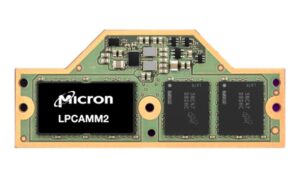In partnership with Keysight Technologies
By Ee Huei Sin
With the pace of technology quickening, 2024 is shaping up to deliver another round of breakthroughs that promise to fundamentally reshape how the world lives, interacts, and communicates.
Pushing the boundaries of innovation, artificial intelligence (AI) and machine learning (ML) are poised to begin making serious impacts in 2024 by enabling other technologies such as 6G, cloud computing, networking, and electronic design automation (EDA).
In wireless communications, full 5G capabilities will be realised, while progress will be made in defining 6G technologies and standards.
The upcoming year will also see a host of semiconductor innovations including chiplets, new standards, and a continued focus on software-based test and design.
In addition, quantum computing will begin to move from theory to reality with the emergence of quantum-as-a-service.
In a little more detail, here are the key tech innovations and trends that Keysight believes will shape 2024:
1. Artificial Intelligence
6G embraces AI for network optimisation. AI has a large role to play in helping optimise 6G. However, it will not be the much-hyped generative AI that relies on large language models and vast data sets. Instead, it will be domain-specific data combined with the power of AI models and wireless domain expertise that will help solve specific industry problems.
For example, AI algorithms will make improvements in the air interface, helping optimise the 6G system. Other use cases include advancing how to manage mobility during handovers, cell-site planning, and optimising MIMO. But, before AI can add value to the development of 6G, it needs to be more reliable, explainable, and much less expensive.
Impact of AI in the cloud computing market. AI workloads require GPU and memory intensive capacity. In the past, we thought of cloud computing as having three primary competitors: AWS, Azure, GCP. Generation 2 of the Oracle Cloud Infrastructure (OCI) with its significant price and performance advantage in GenAI training has created a 4-horse race in the cloud computing space now.
EDA turns to AI. From complexity to clarity. The application of AI and ML techniques in electronic design autonomation (EDA) is still in the early adopter phase, with design engineers exploring use cases to simplify complex problems. The intelligence is particularly valuable in model development and validation for simulation, where it assists in processing large volumes of data.
In 2024, organisations will increasingly adopt both technologies for device modelling of silicon and III-V semiconductor process technologies, as well as system modelling for forthcoming standards such as 6G, where research is well underway.
2. Wireless Communications
5G still a work in progress. At the end of 2023, there are fewer than 50 commercial standalone 5G networks in the world. Over the next few years, the pace of transition from non-standalone to standalone networks will accelerate as these architectures support a fully programmable 5G network, which in turn enables operators to build services beyond enhanced mobile broadband.
The expansion of standalone networks should pick up, as will the use of network slicing and resolving defects and performance challenges. In addition, the 5G ecosystem will grow in order to support capabilities in a broader range of industries beyond gaming and social media activities. This will lay the groundwork for 6G to be used across a wide set of use cases.
Spectrum Smorgasbord: A huge challenge for wireless industry. Over the next five years the global wireless industry will have to support and manage 2G, 4G, 5G, and 6G networks. This carries significant technical and business challenges. With more than a fifth of the world’s population still relying on 2G, developing regions like Africa and most of Asia will not sunset many legacy networks before the end of the decade.
6G is not going to overhaul the core network. 6G will not result in a major overhaul of the core network. It will evolve, but a significant revamp, as happened with network functions in the transition from 4G to 5G, will not occur. The majority of the wireless industry now accepts that this would be a mistake.
Metaverse: more than an entertainment destination. Despite most discussions of the metaverse focusing on gaming, it will evolve to support much broader use cases than those laid out by Meta.
By the end of the decade, augmented and virtual reality will be part of our daily lives, and 6G will be pivotal in providing the bandwidth and connectivity to support these synthetic environments and facilitate seamless interactions between the virtual and physical worlds.
Global spectrum harmonisation on the radar for 6G. The World Radio Conference in late 2023 will determine the available frequency bands that 6G will use and put in place a plan to make global spectrum harmonisation a reality. This will enable operators to realise economy of scale for components and limit the number of bands to support.
3. Semiconductors / Electronic Design Automation
Advanced semiconductor innovations on the horizon. Connecting the digital and physical worlds will require more powerful digital processing and interfaces able to overcome increasingly complex signal physics. An array of advancements in semiconductor technologies will be essential to achieve this and overcome the associated challenges.
Predicting performance remains imperative in electronic design. In 2024, engineers will continue embracing shift left with their electronic product development cycles. As design moves from the physical into the virtual space, engineers are able to discover and fix problems in the most efficient manner, providing greater insights and performance improvements.
The next few years will see a continuing emphasis on connecting design and test workflows to handle rising complexity and more demanding time-to-market requirements for electronic products in wireless, wired, aerospace and defense, and other industries.
3DIC and heterogeneous chiplets: new standards come into view. New standards such as UCIe are emerging for the creation of chiplets and the disaggregation of system-on-chip designs into smaller pieces of intellectual property that can be assembled into 2.5D and 3D integrated circuits using advanced packaging. For designers to accurately simulate die-to-die physical layer interconnect, it will require high-speed, high-frequency channel simulation to UCIe and other standards.
Software automation empowers engineers. As Moore’s Law reaches its limits, improving design processes through workflow automation will provide a pathway to increasing the productivity of design engineers. In 2024, software automation techniques, such as Python APIs, will take a more significant role in integrating “best-in-class” tools into open, interoperable design and test ecosystems.
Navigating the digital shift: design management essentials. With the creation of digital enterprise workflows, many organisations are investing in design management across tool sets, data, and IP. Moving forward, design data and IP management software will play a critical role in the success of complex SoC and heterogeneous chiplet designs supporting large, geographically distributed teams.
The creation of digital threads between requirements definition and compliance as well as establishing tighter links with enterprise systems such as PLM will play a role in the digital transformation of product development cycles.
Silicon photonics fuels data centre transformation. Data centres are evolving to provide higher compute performance to support the exponential growth in AI and ML workloads, as well as the need for more efficient power utilisation and thermal management. Silicon photonics will play a critical role in accelerating the transformation of data centres to meet the appetite for compute performance.
As design engineers develop high-speed data centre chips that incorporate silicon photonics interconnect, they will need process design kits (PDKs) and accurate simulation models that support the advanced development work.
4. Quantum Computing
From theory to reality, the quantum potential. Quantum technology allows us to harness the fundamental laws of quantum mechanics to solve problems that are extremely challenging or impossible today. With quantum technology, complex simulations and computations, secure communication, and more powerful imaging and sensor techniques will be possible.
Democratising quantum: the emergence of quantum-as-a-service (QaaS). Due to the significant cost and resource burden in developing quantum labs, this will give rise to more quantum-as-a-service (QaaS) providers. Remote cloud access to quantum processors, test beds for device characterisation, and foundries that offer fabrication services are examples of services that are available which in turn will help attract start-ups into the quantum ecosystem.
QaaS providers, over time, will help standardise device operation, characterisation, and fabrication, which will enable benchmarking of quantum processors and qubit-adjacent enabling technologies.
5. Sustainability
Energy consumption drives technology decisions. Technology decisions, rather than solely evaluating performance and cost, will increasingly take into account sustainability. Energy efficiency will be a C-suite imperative influencing every decision in order to achieve environmental goals.
Need for more energy alternatives. To support the shift to more renewable energy, the grid will increasingly need to add storage to enable utility companies to manage the peaks and troughs of demand efficiently.
Microgrids will play a bigger role. Today, we lose about 50 per cent of electrical energy through losses in distribution, so microgrids will become increasingly popular as they can generate, distribute, and control energy close to where it is used. The ability to provide reliable and resilient power will see them used in a diverse range of applications spanning suburbs, rural electrification, military bases, and critical infrastructure facilities.
The next frontier in EVs: prioritising and predicting battery health. As EVs continue to evolve, range anxiety will start to dissipate as 300 miles becomes standard. However, attention will shift to the health of batteries.
With cell phones already illustrating how batteries can deteriorate over time, no driver wants to experience a car that quickly loses power, potentially leaving them stranded or, at the very least, requiring multiple charges per day.
Battery health will become a factor influencing EV buying decisions, presenting an opportunity for auto manufacturers to visualise a car’s health status to reassure and inform drivers. The information will be more granular and incorporate gamification interfaces so drivers can see how their actions influence keeping the battery management system at peak performance. Additionally, by integrating AI algorithms into the system, it will predict the health and performance of batteries under various conditions, quelling any concerns.
The wireless drive to net zero. With sustainability concerns growing around wireless networks, AI will play a pivotal role in helping reduce the environmental impact of 6G.
For example, the technology can determine how to optimise power consumption by turning on and off components based on real-time operating conditions. As 6G networks roll out and more devices and machines become wirelessly connected, it will create an opportunity to optimise operations and reduce carbon footprints.
For example, 6G will help autonomous vehicles become more advanced, which will reduce traffic and some of the waste and inefficiencies associated with human-led driving.
In farming, IoT devices connected to 6G will monitor soil conditions and help optimise water and fertilizer use. Once 6G becomes ubiquitous, it will usher in a new era of sustainability-driven operations.
Industry standard metrics on deck: The industry will look to standardise sustainability measurements in 2024, including measuring the total carbon footprint of a wireless network. This will help avoid greenwashing claims and accelerate the drive to net zero.
About the author

Ee Huei Sin is President of the Electronic Industrial Solutions Group at Keysight Technologies. Based in Penang, Malaysia, she manages a broad portfolio of businesses that address the automotive, energy, general electronics, manufacturing, education, and semiconductor industries around the world.






